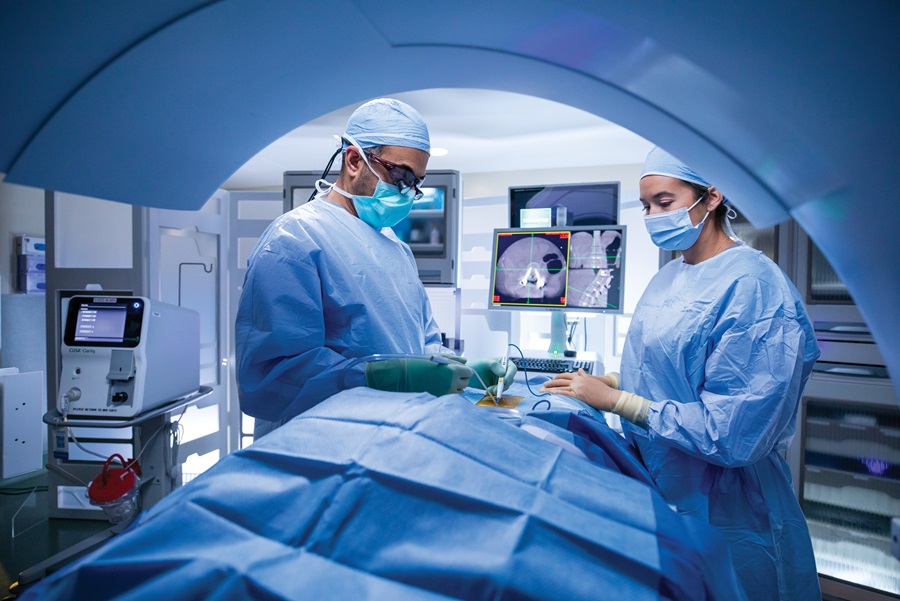An Overview of Spinal Column Conditions That Usually Cause Surgical Treatments
When traditional treatments stop working to minimize persistent signs,Spine conditions such as herniated discs, spinal stenosis, and degenerative disc condition frequently require surgical treatments. These problems not only result in considerable pain but can likewise drastically hinder daily performance and general high quality of life. Understanding the subtleties of each problem and the matching surgical alternatives, such as discectomy or spine blend, is critical for reliable administration. As we explore these problems better, it becomes obvious that the decision-making process surrounding medical therapy is diverse and warrants careful factor to consider.
Herniated Discs
Although numerous individuals with herniated discs may locate relief with conservative treatments, surgical treatment comes to be a required factor to consider when signs continue or aggravate - best spine surgeons in st louis mo. A herniated disc happens when the soft internal gel of a spinal disc sticks out via its external layer, potentially leading and pressing close-by nerves to pain, tingling, or weakness in the extremities
Conservative administration typically consists of physical treatment, pain medications, and corticosteroid shots, which aim to minimize inflammation and improve function. In instances where these approaches stop working to reduce debilitating symptoms, medical choices might be checked out.
The most typical procedure for herniated discs is a discectomy, which involves the removal of the herniated part of the disc to soothe pressure on the impacted nerve root. In extra severe cases, spine fusion may be needed to stabilize the impacted vertebrae.
Patients are advised to talk about the prospective dangers and advantages of surgical treatment with their health care carrier to make a notified choice. Eventually, the objective of any type of medical treatment is to bring back feature, relieve discomfort, and enhance total lifestyle for people dealing with herniated discs.
Spinal Stenosis
Spinal stenosis happens when the areas within the spine slim, resulting in boosted stress on the spine cable and nerves. This problem can establish in various regions of the spinal column, including the cervical and lumbar locations, typically as a result of age-related adjustments, such as degenerative disc illness, joint inflammation, or enlarging of tendons.
Individuals with spinal stenosis might provide with signs that consist of discomfort, feeling numb, prickling, or weak point, mainly in the legs or arms. These symptoms can be worsened by activities that involve standing or strolling, usually leading individuals to look for relief via traditional therapies like physical treatment, drugs, or epidural steroid injections.
However, when these non-surgical treatments fall short to offer sufficient alleviation, surgical alternatives might be taken into consideration. Typical medical treatments for spine stenosis include laminectomy, which entails the removal of part of the vertebra to reduce pressure, and spine fusion, which supports the damaged location.
Spondylolisthesis
Spondylolisthesis happens when one vertebra slides onward over one more, bring about imbalance of the spinal column. This condition can arise from various factors, including article source congenital issues, injury, or degenerative adjustments in the spinal column. It is most typically observed in the lumbar region, especially at the L4-L5 and L5-S1 degrees.

When non-surgical techniques fall short to alleviate symptoms or when substantial nerve compression is existing, medical intervention may be called for. Surgical options you can look here can consist of spine fusion or decompression procedures, aimed at recovering alignment and relieving neurological signs and symptoms.
Degenerative Disc Illness

Clients with DDD usually experience pain that might emit to the legs or arms, depending on the affected region of the spinal column. The problem can be diagnosed with a combination of scientific evaluation, imaging researches, and person history. Treatment choices commonly begin with conventional steps, including physical treatment, pain monitoring, and way of living adjustments. Nonetheless, when these strategies fail to give appropriate relief, surgical interventions may be considered.
Surgical options for DDD may include back combination or synthetic disc replacement, targeted at supporting the impacted sector and reducing discomfort (best spine surgeons in st louis mo). Eventually, the option of treatment is individualized, taking right into account the extent of the condition, individual wellness, and lifestyle elements
Spinal Growths

Spine tumors can develop from numerous aspects, including hereditary proneness, ecological impacts, and pre-existing clinical conditions. Individuals may offer with a variety of signs, including local discomfort, neurological deficiencies, weak point, or adjustments in bowel and bladder feature, depending on the tumor's size and area.
Medical diagnosis typically includes imaging researches such as MRI or CT checks, which assist delineate the lump's qualities and influence on surrounding frameworks. In evaluating treatment alternatives, the lump's quality, place, and type are vital considerations. Surgical treatment might be warranted to ease symptoms, obtain a biopsy, or browse around these guys get rid of the tumor entirely. The objective of surgery is typically to unwind neural components and maintain the spine. Adjuvant therapies, consisting of radiation or radiation treatment, may additionally be essential depending upon the tumor's nature. Early detection and treatment are vital for optimizing results in patients with spine lumps.
Final Thought
In summary, spine problems such as herniated discs, spine constriction, spondylolisthesis, degenerative disc condition, and spinal lumps often demand medical intervention as a result of their possible to trigger considerable discomfort and functional disability. While conservative treatments may use short-term alleviation, medical choices become critical when signs continue or get worse. Prompt medical diagnosis and treatment play an essential duty in bring back feature and enhancing the lifestyle for affected individuals, underscoring the value of extensive spinal treatment.
